
Photograph by Audra Melton
At 7:45 in the morning on the last Friday of every month, a troop of fresh faces makes its way down an inconspicuous hallway into the belly of the White Provisions Building to Mashburn HQ. In the office’s whitewashed basement, which serves as a sample room and workshop for the husband-and-wife clothiers, garments are folded, hanging, and stacked neatly in front of a faux boxwood wall. White Tretorn sneakers are knotted together and slung over the handlebar of a leaf-green bicycle. The whimsical display could be a store window, but it’s all behind the scenes.
Welcome to the monthly briefing on the latest styles to hit the floors of the Ann and Sid Mashburn stores: new merchandise from their house lines, which the couple design themselves, and a smattering from their favorite brands. The entire Atlanta-based staff—around 80 employees from sales, IT, design, shipping, and other departments—sits with bright eyes, buffed shoes, and poised pens. Sid likes to begin at 8 a.m. sharp.
“This is a fantastic suit,” Sid starts with a smile, rubbing his hands together. “The fabric itself is fantastic. It’s a tropical fabric. Now, whenever we say ‘tropical,’ it’s really an industry term for a particular weave—it doesn’t mean it’s just for the tropics. But the openness of the weave allows some breathing to go on, okay?” He’s a natural educator, and there are certain words he loves to use: “Fantastic” (emphasis: fan) is one. The rhetorical “okay” is another, his Mississippi accent stretching the word to three syllables.
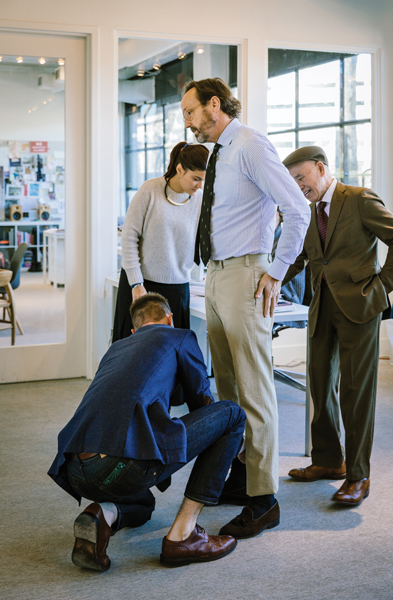
Photograph by Audra Melton
He’s going on about esoteric weaves and wefts, pick-and-picks, nailheads, and end-on-end fabrics, while everyone nods, perfect coifs bobbing. It’s like the consummate menswear blog or Instagram feed come to life.
Sid himself is wearing a worsted flannel charcoal suit of his own design, a black silk tie dotted with little green owls from his label, and glasses with clear pinkish frames. It’s 39 degrees out and, despite his reputation for bare ankles, he is wearing socks. The tail of his tie isn’t secured in the keeper and is flying from side to side as he paces between the table and his audience. His monkstraps aren’t quite buckled all the way. This cheekiness is a privilege of the master.
As he moves through new shirts and ties, he calls out tricks for matching colors, suggesting pairing browns with blues, or, as he calls it, “dirt and sky.”
“Because in the end, we’re trying to provide solutions for these guys,” he explains. “What you’re trying to share with people is: We’re not trying to sell you a lot of things. We’re trying to sell you the right things.” (This might sound like a platitude if he didn’t then have an employee stand up and explain the cluster analysis of a sample closet, ranking pieces on five dimensions including travelability and cost per wear.)
“Now,” he says, picking up a little half-moon leather coin case and tossing it into the crowd. “These are pretty cool.”
“It’s a great place for a love note for Valentine’s Day!” his wife, Ann, calls out from the back of the room.
“Or earbuds!” someone calls out.
“Your retainer!” shouts someone else.
Once Sid wraps up—and after two employees shared the intricate details of the store’s new bike, made by a neighbor at the Goat Farm (“how can we help him lift his business up?”)—the room pivots 180 degrees to face breezy spring dresses.
Ann is wearing wide-leg navy-blue pants and her signature white button-down, with her dark hair pulled into a low bun. But Ann is not a performer the way Sid is. She leads her presentation with the head of design and production, Lan Ta, an elegant woman originally from Vietnam.
The fit model walks out first in a canvas skirt suit. But she’s not just the fit model; she also heads up the company’s copywriting and creative design. And she is the company’s third employee and the Mashburns’ oldest daughter, Elizabeth. She’s 26, fair, and doe-eyed. When she steps back out in a black Sonia by Sonia Rykiel ruffle dress with a tiny punky cutout at the ribcage, Ta remarks, “It has a little peekaboo on the side.” She pauses. “But it’s very discreet.” Ann chimes in, smiling, “Just like us.”

Photograph by Audra Melton
Sid and Ann Mashburn have become synonymous with Atlanta’s fashion design and retail scene. Sid’s eponymous preppy-sporty-fine haberdashery has been declared one of the best menswear shops in America by both Esquire and GQ, making him legendary in the world of cool, gentlemanly dressing, a sport he helped invent in the modern era. But back in 2007, when the couple moved to Atlanta with their five daughters, they might as well have picked the city out of a hat. They knew barely a soul. When they visited, Ann was struck by the daffodils in February. Sid was struck by Taqueria del Sol. He thought the neighboring storefront, where Switch Modern was then packing up its boxes to move across the street, looked like a good place for a shop. And that was enough.
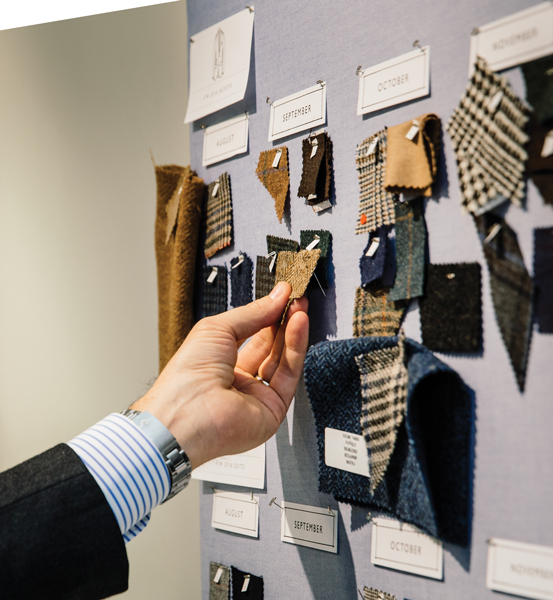
Photograph by Audra Melton
Sid had wanted to open his own men’s specialty shop since he worked in one as a teenager in his small hometown outside of Jackson, Mississippi. He moved to New York after Ole Miss and over the years landed design jobs with the greats—Ralph, Tommy, “a little catalogue company in New Jersey” called J.Crew. Before moving to Atlanta, he’d been leading the design team at Lands’ End in Dodgeville, Wisconsin. When he opened his shop in October 2007, he knew he wanted it to be influenced as much by hospitality—hotels, restaurants—as by traditional retail. Record players would spin James Brown. Cokes would chill on ice. Ping-pong paddles would await.
Ann—who was once the assistant to famed Vogue editor Polly Mellen, then an editor at Glamour and a stylist—had something to say about style, too. In 2010 she opened her own women’s store next door to Sid, filled with easy, Parisian tomboy-chic classics and that same warm, convivial service.
Six years later, Mashburn, as the brands are collectively called, has four locations and counting. The couple quietly—as it would seem from Atlanta—opened in Houston in 2013 and in both Dallas and Washington, D.C., last year. And they don’t plan to stop there; next stops might include New York or California. Like the Ralphs and Tommys before them, the Mashburns have plans to be “the world’s go-to lifestyle brand,” a mini empire selling not just clothes but a way of life—the effortlessly cool personality, the hip playlists, the lessons on how to look put together but not done up—all radiating from their Atlanta headquarters.

Photograph by Audra Melton
That’s a tall order for a specialty shop branded around hospitality and intimacy. So the key to the Mashburn way (besides tie tails flying and monkstraps flapping) is hiring and training. Sid regularly says he hires for “helpfulness and hopefulness.” They are banking on this simple strategy to keep their brand integrity as they grow.
That Friday, Sid and Ann hold a new employee orientation in the bright office alongside the train tracks, an office they share with the company’s COO, David Supple. Seven eager neophytes sit around the tulip table. Boxcars roll by. A board reads “no negativity allowed.”
The first new employee that day is number 154, Daisy Mashburn, Sid and Ann’s third daughter, who is taking a semester off from the University of Virginia to work at Mashburn in customer service. Another new employee is of Vietnamese descent. He will be working in IT but has relatives who are tailors with the company. The next is Irish; he cites The Beatles, Bond, and Savile Row as life influences. And another is originally from Karachi. He says his ancestors worked in raw cotton in the garment industry, and that he’s always loved textiles and stories and objects. “It was in your blood,” Sid says, nodding.
Ann passes out handmade “culture kits” that serve as employee bibles, complete with fine wax seals, and she and Sid take turns reading, emphasizing buzzwords like humility and honor. The recruits joke about how many times they’d interviewed and—in some cases—how many years they’d waited for the job. Even sales associates are salaried, and being hired is like being welcomed into an elite club—or a very big family.
“We’re trying to make it like our house,” Ann tells the group. “We believe in bringing people joy.”
This would sound sappy if it weren’t so apparently true. Take in-house photographer Sangsouvanh (“Sang”) Khounvichit, for example. Several years ago he was hired to work in the warehouse, or “pick, pack, and ship” (where, yes, they do all wear ties). Sang, who is a musician and photographer, says Ann saw him one day with his camera, and before long, she had him shooting full time. “They see all these skills in everyone,” he says of Sid and Ann. “And as I grew with the band—” he stops and laughs, catching his own error. “Well, it is like a band—like a huge Polyphonic Spree superband.”

Photograph by Audra Melton
Much of the day is spent planning the fall collections, for which the men’s and women’s teams break into separate huddles on opposite sides of the open floor plan.
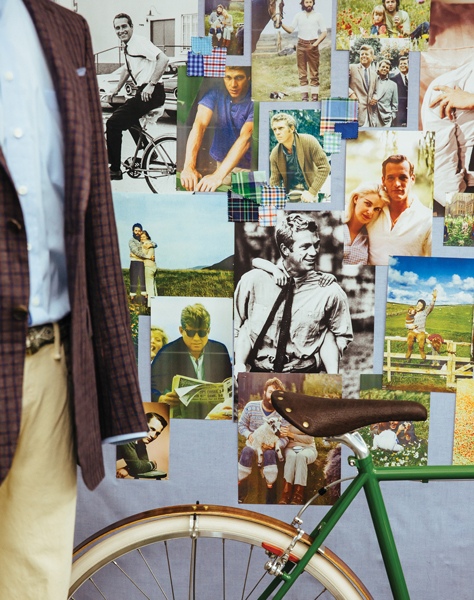
Photograph by Audra Melton
Ann’s moodboard is built around a picture of a fox. There are fabric samples everywhere: tweeds, felted wools, jacquards. The women’s design team, led by Ann and Ta, quickly moves through the swatches, which they’d scouted the year before in Milan. There are hundreds of options. It’s time to cull.
“Do we love this?” they keep asking, and then discarding it or putting it in a keep pile with color-coded stickers for love, like, or maybe. “This is very 70s—no, that’s a good thing.” “It’s got that men’s pajama thing.”
Sid’s new pieces are often inspired by his style closet downstairs, which houses his personal archives.
He describes fabric like pieces of art. Khaki can be too soapy, too brushy, too pink, too yellow. He looks for one that’s more “palomino.” Some wools are too toothy, some not enough. One wool he dubbed “too spongerella” for its springy texture. Then he’ll find one he loves: “Chaka Khan, that’s cool!” “Gol-lee, that’s pretty!”
Sid’s most trusted adviser is master tailor Quang Dau, whom he calls his “engineer, designer, businessman, mentor, and friend.” At 75, he is among the last of an old guard of Atlanta tailors. There are not many young up-and-coming tailors in the U.S. (or anywhere for that matter), and Sid says he dreams of bringing the world’s best tailors to Atlanta to manufacture their clothing right here. “Today it’s just a dream,” he says. “But we’ve got to be thinking 10 years ahead.”

Photograph by Audra Melton
The Mashburns live in a 1920s white brick house in Buckhead with a pea gravel drive and a pool framed by (real) boxwoods. Four of their five daughters, ages 15 to 26, are currently living at home; Elizabeth rents the carriage house above the garage, which houses two older-model Mercedes station wagons. Inside the main house is an easy mix of modern lighting and wooden antiques. The dining room table holds neat stacks of paperwork. Bright pink couches have relatable lumps and fades—like maybe someone dribbled a little lemonade while sprawled out reading one Sunday afternoon. Nothing is fussy or overdone.
The kilim rugs look familiar. Elizabeth explains her parents actually pulled things from their house to decorate the stores, including the ping-pong table. The stores, then, are quite literally an extension of their home.
“I think that’s why we really get the store,” says Daisy, who has Sid’s expressive eyes and grin. “It really is our parents.”
“It’s the whole spirit,” chimes Elizabeth. “It’s the way we were raised—that whole attitude of serving. People here really like to make it happen. They really like to say yes.”
“And there are a lot of things we just always did,” she continues. “We used to do things like tie-dye in the bathtub. Then a few years ago, we made pocket squares for the store. I think they said ‘dyed in-house’ or something.”
“Literally dyed in-house,” says Daisy. “In tub.”
It is a family business above all. But for their plans to work, say Sid and Ann, the family has to be bigger. The sort of family they need to grow, well, it needs to be transcontinental.

Photograph by Audra Melton
This article originally appeared in our Spring/Summer 2016 issue of Style Book.



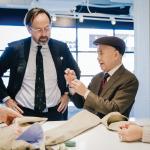



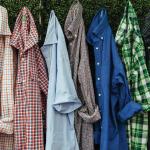





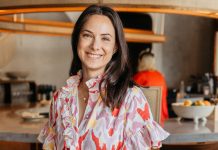




![The North Carolina Museum of Natural Sciences’ newest exhibit is a [pre]historic first](https://cdn2.atlantamagazine.com/wp-content/uploads/sites/4/2024/04/DD-3-100x70.jpg)




